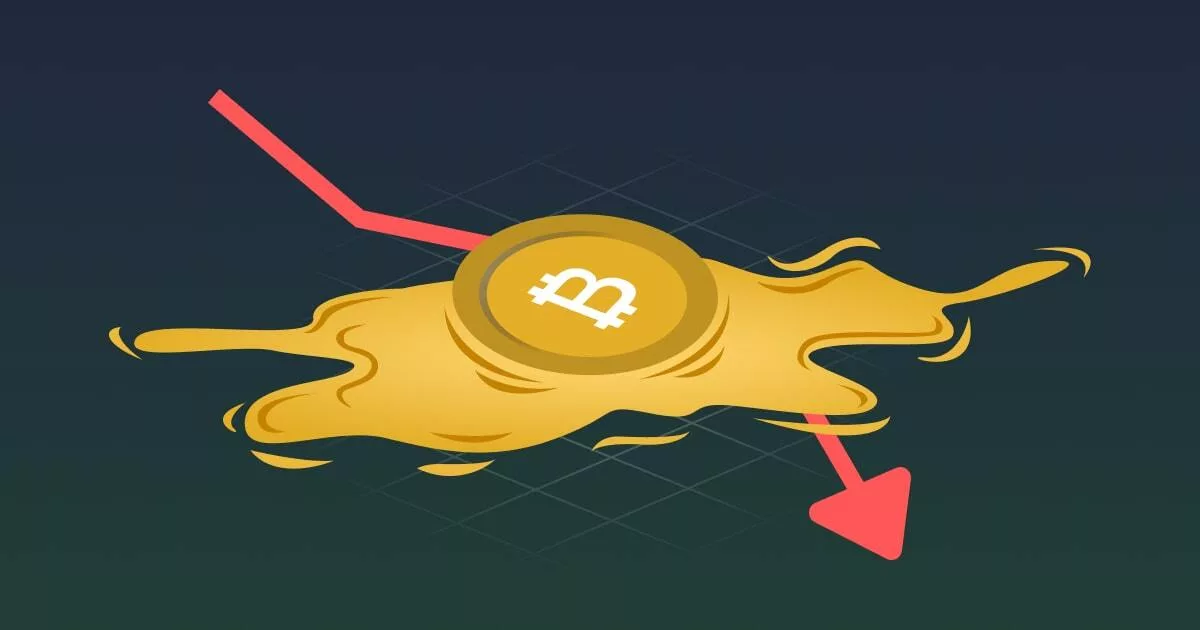
Cryptocurrencies offer an exciting investment opportunity, with the possibility of striking it big. These digital assets can offer rewards much greater than traditional instruments such as stocks or gold. Crypto trading allows investors to shoot for the moon and reach for the stars. Also, it’s not uncommon in the highly volatile crypto market, where sudden price changes can quickly lead to the forced closure of trades, also known as ‘Liquidation.’
But, with the right strategy and techniques, traders can avoid the prospect of liquidation and maximize their returns.
In this guide, we’ll dive into the world of crypto liquidation and explore the ins and outs of this critical aspect of trading.
What Does Liquidation in Crypto Trading Mean?
In general, liquidation means to converting an asset into cash. But, in the context of crypto trading, it has a slightly different meaning.
And to understand that, it’s important to know what a leveraged position is.
A leveraged position is a type of trade in which an investor uses borrowed funds to buy a significant portion of a crypto asset. Leveraged trading enables traders to increase their potential ROI and earn a larger profit. On the other hand, it also increases the risk of losing more money than the initial investment.
Additionally, there are scenarios where the crypto exchange may shut down a trader’s leveraged position, and this process is called liquidation. This happens when the crypto’s value decreases below a certain level called the ‘liquidation price.’ The liquidation price is the asset price at which a trader’s position will be automatically closed by the exchange as there is no sufficient money to keep the trade going.
How Does Crypto Liquidation Occur?
Cryptocurrency is known for its volatile nature. It means the market can move against you at any time.
Moreover, the crypto market has become even more unstable because of the rising use of derivatives. Derivatives include margin trading, perpetual swaps, and futures — All of which are types of contracts that allow traders to predict where the price of a crypto asset will be in the future.
When trading with leverage, you’re borrowing money from the exchange. Suppose you incur a certain level of loss on your position. In that case, the exchange is allowed to close your trade if the market goes against you. This is like a safety net to prevent further loss on leveraged positions.
It is worth noting that derivatives also apply to the stock market. But, the inherent volatility of the crypto market makes derivatives a super risky proposition.
Different types of Crypto Liquidation
There are two types of crypto liquidation — Partial and Total liquidation.
1. Partial liquidation
Partial liquidation is the most regular type of liquidation. It happens before all the initial margin is used up. Its main goal is to prevent the trader from losing too much money. The rules of partial liquidation depend on the agreement between the trader and the exchange.
2. Total liquidation
A total liquidation happens when all the initial margin has been used. In such cases, the exchange shuts down the whole trade to stop any more losses. The trader loses all the money they invested and still might have to pay back a debt.
Both these types apply to long and short positions or trades. ‘Long’ trades are bets that the price will go up, and long liquidations happen when these trades get closed. ‘Short’ trades are bets that the price will go down, and short liquidations occur on these positions.
Margin Trading Liquidation in Cryptocurrency
Let’s take a step back for a minute and consider a specific type of trading: Margin Trading.
Margin trading is where an individual borrows money from a crypto exchange to enhance their trading volume and leverage. One can use leverage to open larger positions with less capital, increasing the potential gain. Many crypto exchanges today offer margin trading to retail investors.
However, as with all investments, margin trading also comes with its own set of risks. As you would have guessed, one of the key risks is the potential for liquidation. To mitigate this risk, exchanges require traders to provide collateral as an “initial margin” when opening leveraged trading positions. This acts as a security guard for the exchange if the trade doesn’t go as planned.
So, when engaging in margin trading, you are borrowing money from the exchange while also providing some of your own capital as collateral. If the market moves against your position, the exchange will close it forcibly to recoup the initial margin and avoid further losses on the borrowed money.
Avoiding Crypto Liquidation
While it’s essential to be aware of the potential risks, let’s focus on the preventive measures.
Below are a couple of effective ways to avoid liquidation. Think of it like an emergency brake. It’s a built-in safety measure that can prevent further losses if things worsen.
1. Stop loss
A stop order is a type of order you can place through a crypto exchange to sell an asset when its price reaches a certain level. It is a great tool for managing risk when trading with leverage.
When placing a stop order, you need to specify the stop price (or the selling price) and the trade size. When the asset’s price reaches the stop price, the exchange will automatically execute the order and sell the specified amount at the specified selling price.
Stop losses are a tool to keep your losses at bay. There’s no fixed rule for determining the stop loss point, but it’s usually advised to set it below 5% of the total trade size.
2. Manual margin ratio monitoring
An alternative to a stop order is manually monitoring your losses using a formula:
Liquidation % = 100 / Leverage.
In this case, you’ll need to know the percentage change required in the market for your position to be liquidated.
To explain this concept with an example, let’s consider a scenario where an individual opens a trade with an initial margin of INR 100 and leverage of 5X, creating a position of INR 500.
Using our formula, it looks like the following:
20% = 100 / 5
In the above example, liquidation would occur if the asset’s price moves 20% against your position. In this case, it would be a decrease in value from INR 500 to INR 400.
Conclusion
A leveraged position can lead to significant gains when a trade goes well. But if the price moves in the opposite direction, it can also lead to liquidation. This is especially true in the crypto market, which is known for its high volatility. This is where the importance of risk management comes in, as it allows traders to control and limit their potential losses.
With a proper strategy in place, traders can navigate the crypto market confidently and focus on long-term success rather than short-term losses.
FAQs
1. How long does it take to liquidate crypto?
It can take anywhere from a matter of seconds to several minutes for liquidation to occur on centralized exchanges (CEX). It is because of their strict margin requirements. Also, they use advanced algorithms to monitor positions and trigger liquidation.
But it can take longer on decentralized exchanges (DEX). In DEXs, traders are in charge of managing their own margin, and the process of closing a position may involve waiting for a buyer or seller to match the order.
2. How much crypto can you liquidate?
The amount of crypto that can be liquidated depends on the position size and the margin requirements of the exchange being used.
When trading with leverage, traders must maintain a certain amount of collateral (aka margin) to cover potential losses. The amount of margin required varies depending on the exchange and is typically a percentage of the total position value.
3. Does the liquidation price change?
The liquidation price is the asset price at which a trader’s position will be automatically closed by the exchange due to the inability to meet margin requirements. The liquidation price varies depending on the leverage, margin requirements, and prevailing market conditions.
When the market is volatile, the liquidation price will change more frequently. When the market is calm, the liquidation price will be more stable.





